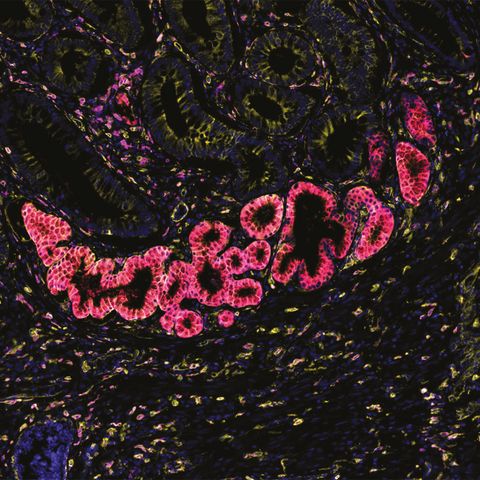Mapping 1.6 million gut cells to find new ways to treat disease

Descarga y escucha en cualquier lugar
Descarga tus episodios favoritos y disfrútalos, ¡dondequiera que estés! Regístrate o inicia sesión ahora para acceder a la escucha sin conexión.
Descripción
By combining 25 datasets, researchers have created the largest cohesive cell atlas of the human gut and uncovered a new way that stomach cells may play a role in Inflammatory...
mostra másThe most comprehensive cell map of the human gut to date has been created by combining spatial and single-cell data from 1.6 million cells.
Mapping the cells of the gut can provide us with further insights into what happens in conditions such as bowel cancer and Inflammatory Bowel Disease (IBD). Using this atlas, researchers from the Wellcome Sanger Institute and collaborators uncovered a new role of a specific gut cell, highlighting its contributions to a cycle of inflammation in some individuals, possibly causing pain and distress.
The study, published today (20 November 2024) in Nature, details how the team harmonised over 25 single-cell datasets of the human gastrointestinal (GI) tract to create the world’s largest freely-available resource of the human gut to date. This includes samples from those with health conditions as well as those without.
Información
| Autor | Wellcome Sanger Institute |
| Organización | Wellcome Sanger Institute |
| Página web | - |
| Etiquetas |
Copyright 2024 - Spreaker Inc. an iHeartMedia Company
